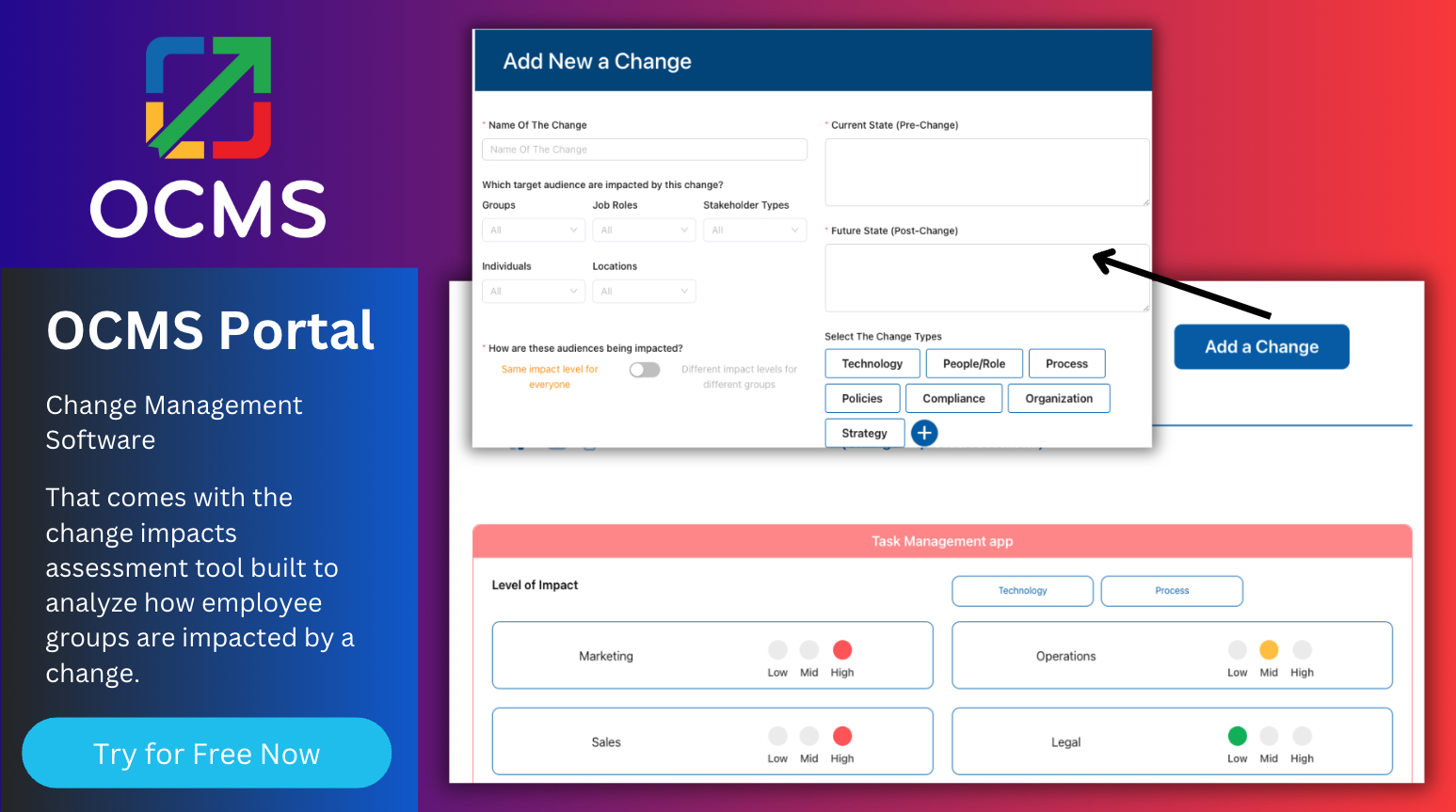A Simple (But Detailed) Guide on How to Handle Change Management in Agile Projects

Are you ready to unlock the power of Agile Change Management?
Change is the name of the game in today’s fast-paced world and Agile Change Management is the buzzword, but for a good reason. It brings a breath of fresh air, a dynamic approach, and an adaptive mindset to help you and your team thrive amidst constant change.
But here’s the kicker: as a Change Manager, making the transition to Agile Change Management might seem a tad daunting. We get it. That’s why we’ve created this guide – to make this journey as friendly and inviting as a chat with an old friend over coffee.
We’ll help break down the key principles, concepts, and practical approaches to Agile Change Management. We’ll explore how to seamlessly shift from the tried-and-true methods of the past to a future brimming with agility, collaboration, and innovation.
So, whether you’re a seasoned pro or just dipping your toes into the waters of change management, consider this your trusted companion for an exciting voyage into the world of Agile Change Management. Ready to get started? Let’s embark on this adventure together!
In need of a quick summary? We’ve got you sorted. And for those of you raring to immerse yourselves in the details of highly effective Agile Change Management, stick around, because we’re your trusty partners on this journey!
Quick Summary
What is an Agile Organization? What You Really Need to Know
An agile organization is one that applies a structured yet flexible agile methodology to implement change. It leverages an agile framework based on sprints and interactivity to quickly adapt to new opportunities while avoiding risks and problems. Each sprint typically lasts 2-4 weeks.
The term “agile” in this context means the ability to move quickly and easily.
There are two uses for the term “agile”: capitalized “Agile” refers to a specific project management approach, while non-capitalized “agile” denotes the common definition of organizational agility. Characteristics of an agile organization include:
- A clear defined purpose
- Empowered decision-making teams
- Quick decision-making and action
- A team-based corporate culture
- Technological support for flexibility
- and robust reporting capabilities
An agile organization may also adopt Agile change management processes to align with its corporate values and vision.
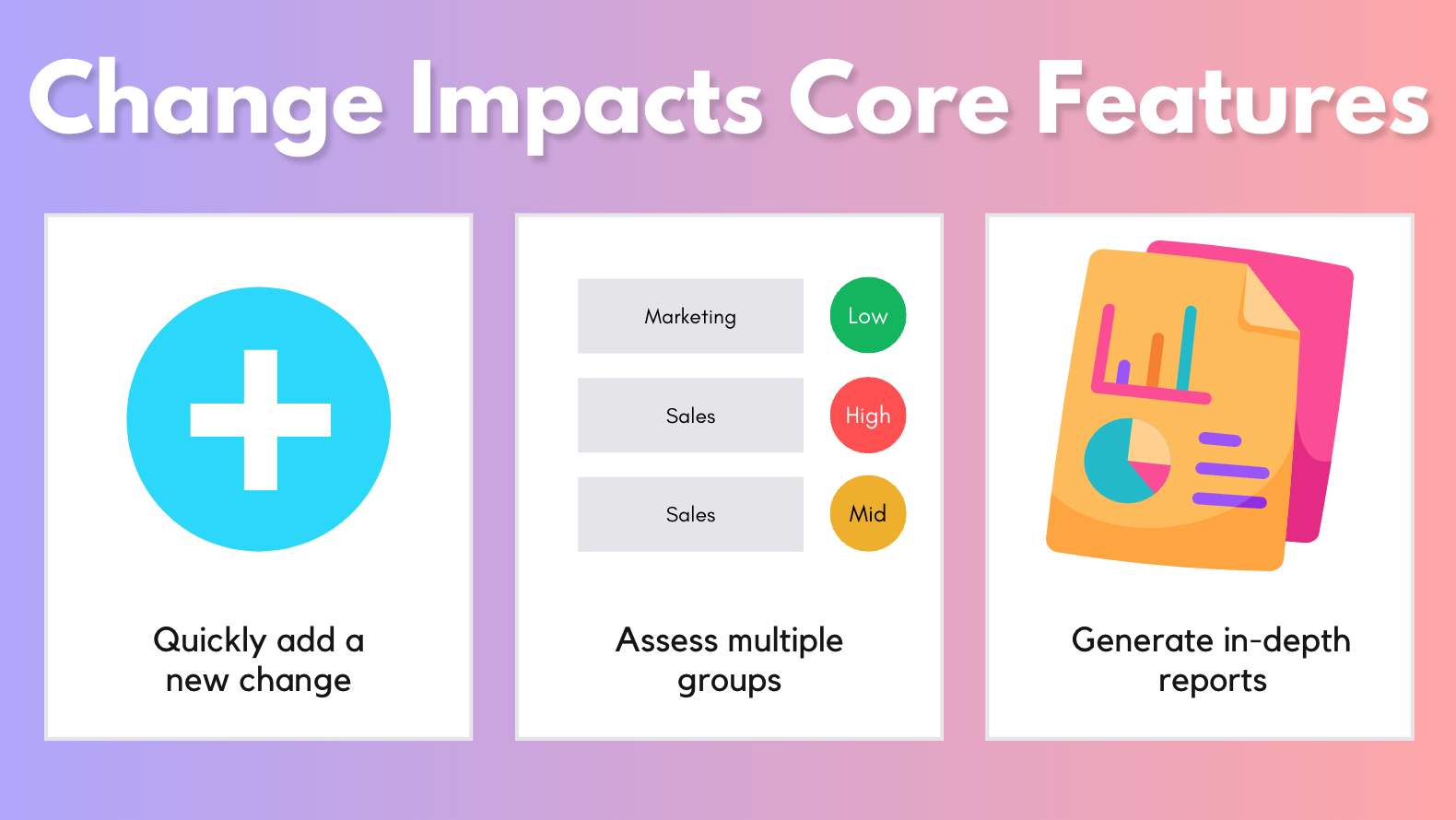
Feeling the headache of juggling those complex and fragmented change impacts assessments in Excel? Well, it’s time to embrace new change with OCMS Portal, your ultimate change management solution for successful transformation. This magic box comes equipped with the Change Impacts Assessment Tool, making impact analysis a breeze, and a whole lot more to ensure your change management venture thrives. Best part? It’s a free sign-up today, and guess what – no credit card needed! Let’s get started!
What is an Agile Change Management Process?
An Agile change management process aligns with Agile project phases and principles. It adapts to evolving project information and focuses on timely communication with end-users. Change management activities are synchronized with the project’s overall timeline, with communication typically beginning 6-12 weeks before the Go-Live phase to ensure user awareness without premature messaging.
There are two key considerations in an Agile change management framework:
- The iterative nature of Agile: The process aligns with the iterative Agile sprints, meaning that change activities evolve as the project progresses.
- Adherence to Agile project management principles: These principles guide the approach to change management in Agile projects.
Agile and Change Management Principles & Samples
In Agile change management, it’s important to align with the Agile Manifesto’s principles to enhance the delivery of change management. Here are some examples of how Agile principles relate to change management:
Principle 2: Embrace changing requirements late in development for a competitive advantage.
- Change Management Agile: Maintain continuous contact with the project team to capture late-stage project changes impacting stakeholders.
Principle 4: Foster daily collaboration between businesspeople and developers.
- Change Management Agile: Encourage collaboration among project partners, as Agile projects often involve parameter changes that should be incorporated into change management plans.
Principle 5: Build projects around motivated individuals with support and trust.
- Change Management Agile: Delegate authority, establish a change champions network, and empower them to gain support within their departments.
Principle 6: Face-to-face conversation is the most efficient way to convey information.
- Change Management Agile: Prioritize face-to-face communication with the project team, sponsors, and critical stakeholders, either in-person or through video meetings.
Principle 10: Simplicity and minimizing unnecessary work are essential.
- Change Management Agile: Avoid using numerous templates and tools; opt for an all-in-one solution like OCM Solution Change Management Software for a streamlined Agile change management process.
These examples illustrate how Agile principles can be applied to enhance change management practices within an Agile project.
How Do You Go From Change Management in Waterfall to Agile?
Transitioning from change management in a waterfall approach to Agile involves adapting to a more iterative and flexible process. Here’s how it differs:
Waterfall Change Management:
- Detailed future state information is available at the project’s outset.
- Assessment of impacted groups and their level of impact is done early in the change management planning.
- Changes in the project after starting change activities are typically minor.
- Change management follows a sequential process.
Agile Change Management:
- Future state details may not be fully available at the project’s beginning, requiring ongoing communication with the project team for adjustments.
- Assessment of impacted groups and their level of impact is initially established but can change as Agile sprints progress.
- Changes during the project can be both minor and major, necessitating adaptability in change implementation.
- Change management is a repetitive and cyclical process, aligned with Agile project phases.
Moving from waterfall to Agile change management involves a shift from a linear, pre-defined approach to one that’s adaptable, collaborative, and responsive to evolving project needs.
The OCMS Portal organizational change management software includes the Change Impacts Assessment tool designed to analyze how employee groups will be uniquely impacted by a change. Try it for free today (no credit card needed).
Change Management in Agile | What’s the Difference Between SAFe, Scrum, and Other Agile Methodologies?
Change management in Agile involves various frameworks and methodologies. Two popular ones are Scrum and SAFe. Scrum focuses on organizing small teams for project facilitation, while SAFe (Scalable Agile Framework) is geared towards organizing entire enterprise organizations for projects or change initiatives.
In addition to Scrum and SAFe, there are several other Agile methodologies, such as Lean, Kanban, Scrumban, Crystal, PRINCE2, Extreme Programming (XP), and more. These methodologies cater to different project and organizational needs within the Agile framework.
Detailed Deep Dive
Everything You Need to Know about Agile Change Management – Agile & Scrum Change Management Framework
This free guide provides you with everything you need to know about the best change framework for agile projects. It includes details on agile change management examples, samples, templates, and change tools that you can use for your needs.
You might be working on a new change management project one day and be taken off guard by a request to take an Agile approach to change management.
Change management and Agile are two different concepts, but they often are used together to facilitate organizational change. Agile is an approach to project management, and change management is a subset of project management.
It’s easy to get confused wondering, “What does Agile project management mean?” or “What is Agile organizational change management?” There are also many terms to learn in Agile itself, such as sprint, Scrum, SAFe, and others.
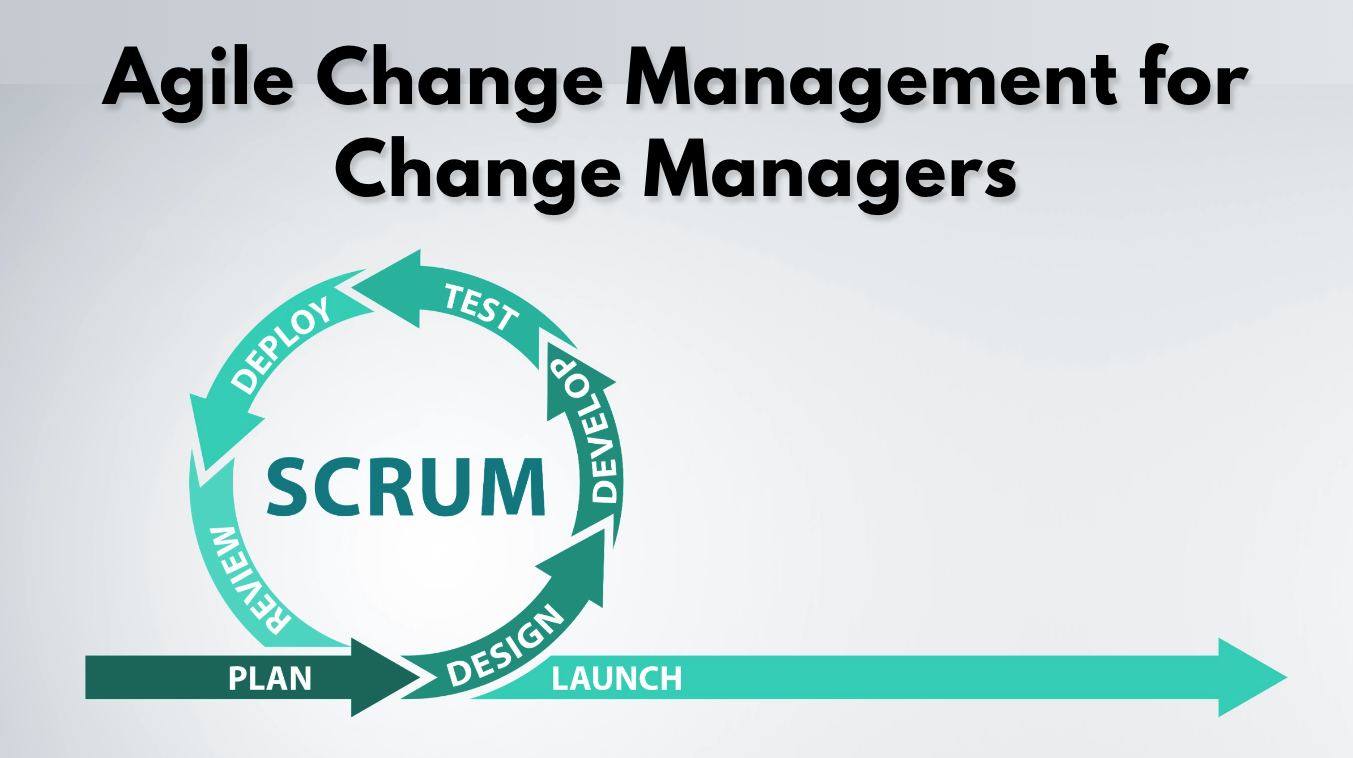
This article will help clarify what doing change management in Agile projects means and how the two concepts go together to drive organizational transformations.
We’ll also provide a high-level overview of the difference between change management in Agile Scrum and SAFe Agile change management. And compare change management in waterfall to Agile.
When doing a change impact assessment using any of the Agile methods or guidelines, such as Prosci Agile change management, you can utilize the OCMS Portal Change Impact Assessment Tool, which includes an Agile change management template.
Table of Contents
Keep on scrolling down this page to read each section or click any link below to go directly to that section.
Change Impact Tool with Agile Change Management Plan Templates.
1. What is an Agile Organization? What You Really Need to Know
2. What Does Agile Project Management Mean?
3. Key Differences Between a Waterfall & Agile Change Management Process
4. The 12 Principles to Follow for the Best Agile Approach to Change Management?
5. Agile and Change Management Principles & Samples
6. How Do You Go From Change Management in Waterfall to Agile?
7. Change Management in Agile | What’s the Difference Between SAFe, Scrum, and Other Agile Methodologies?
8. Templates for Agile Change Management Processes & Planning
Do you have any questions about the agile change management examples outlined in this guide? Are you looking for more information about transitioning from change management waterfall to agile? Please reach out and let us know.
Don’t miss: All-in-One Change Management Agile Tool with Samples & Reporting
What is an Agile Organization? What You Really Need to Know
An agile organization is an organization that applies a structured, but flexible agile methodology to implementing change. By applying an agile framework – which is based on sprints and an interactive approach – an agile organization can pivot easily to take advantage of new opportunities, as well as avoiding risks and problems.
The definition of the word agile is: “able to move quickly and easily.” So, that capability exemplifies an agile organization. In general, each sprint often lasts 2-4 weeks.
There are two different uses for the term “agile.” The version that is capitalized – “Agile” – refers to a specific approach to project management. We’ll dive deeper into that use in this article on an Agile change management framework.
See also: Agile Change Impact Assessment Templates
The non-capitalized “agile,” as in “What is an agile organization?” refers to the more common definition of being agile. Some of the hallmarks of an organization that would consider itself “agile,” are:
- Clear, defined purpose across the organization
- Empowered teams that can make decisions in their respective areas
- Ability to make quick decisions and act on them
- Focus on team-based corporate culture
- Technologically advanced to support flexibility and agility
- Superior reporting capabilities for quick, insightful analysis
When speaking about organizations and project and change management, then you may be incorporating both forms of the term “agile.”
For example, an agile organization (one that can change and move quickly) might adopt Agile change management processes. They may do this to support the agile nature of the company and use change management Agile transformation tools to align these activities with corporate values and vision.

If you have more questions about “what is an agile organization?” or agile change management plan templates please reach out and let us know.
See also: Agile Project Change Assessment Software & Templates
What Does Agile Project Management Mean?
An Agile project management approach to change management and project management means that a project is done using an iterative process. This means that a project is split up into different parts called “sprints.”
Each sprint will involve going through a “mini” version of a waterfall project management process and delivering that part of the project, then moving onto the next part/sprint, improving the parameters of the project from what was learned during the earlier sprint.
The Agile concept used in project management was developed in the early 2000s as a way to improve project outcomes. When projects take a linear (or “waterfall”) approach with a start, middle, and finish, any errors made at the beginning can be very costly to fix by the time that project is completed and problems arise.
Additionally, this waterfall approach means that the delivery of the final project or product being developed will take time, more time than doing it using an Agile change project plan.
We’d be remiss in answering “What does Agile project management mean?” if we didn’t mention that Agile was first invented with software development in mind. It was created in an effort to reduce software delivery times and improve the end product.
The concept was then adopted by multiple other industries to facilitate their projects (software and non-software).
See also: All-in-One Agile Change Management Templates & Samples
Key Differences Between a Waterfall & Agile Change Management Process
Waterfall (linear):
A waterfall project approach involves a linear methodology for which all project phases are done sequentially until the project is completed.
As mentioned in a section above, when projects take a linear (or “waterfall”) approach with a start, middle, and finish, any errors made at the beginning can be very costly to fix by the time that project is completed and problems arise.
Additionally, this waterfall approach means that the delivery of the final project or product being developed will take time, more time than doing it using an Agile change project plan.
Agile (iterative):
An agile project process is iterative for all project phases are performed within each of the sprints. Once all sprints are completed, the project will be considered finished.
This is the basis of project and change management in Agile, but Agile is more than simply the process. It also includes 12 principles that guide how teams work together to complete projects. We’ll go through those next in the section below.
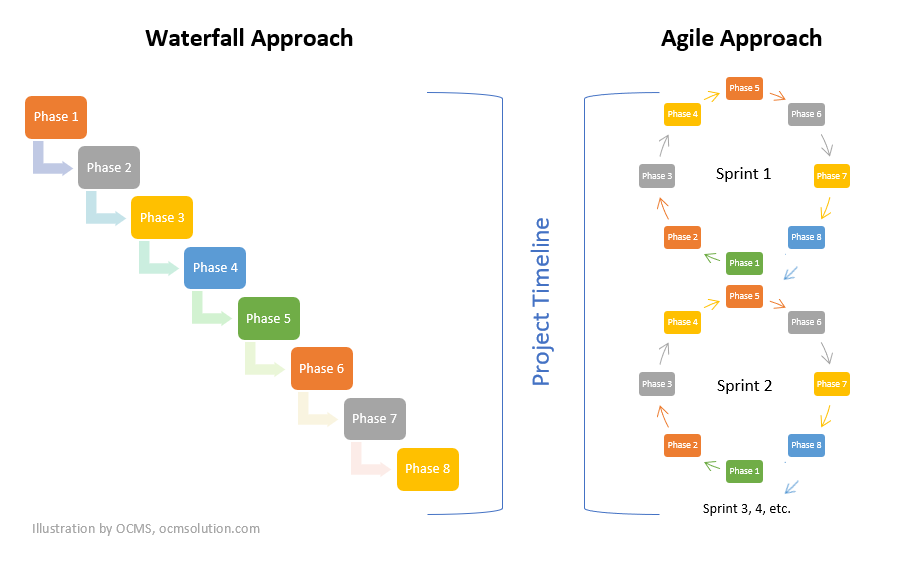
Waterfall Change Management & Project Management vs a Project and Change Management Agile approach
If you’re looking for ways to make your Agile change management process easier and more time-efficient, check out our free templates and playbooks.
OCMS Portal’s Change Management Workflow (step by step tasks) template and Change Management Strategic Playbook can both be used for free to facilitate change implementation in Agile.

See also: Software & Templates for Change Management in Agile
The 12 Principles to Follow for the Best Agile Approach to Change Management?
The Agile Manifesto is a set of principles and values that are used both in project and change management in Agile. These principles are then combined with the iterative approach of the process to foster more effective project and change implementation in Agile.
It’s important for a change manager to understand these principles. They are not just something the “project team needs to worry about.” If the change team wants to complement the project and facilitate the transition of the people and groups being impacted, then its members need to understand these and how Agile and change management connect.
What Are the 12 Principles of the Agile Manifesto for Agile and Scrum change management and project management?
These are the 12 principles as stated by the Agile Alliance. For non-software companies, the term “software” could be replaced by “solution.”
1. Our highest priority is to satisfy the customer through the early and continuous delivery of valuable software.
2. Welcome changing requirements, even late in development. Agile processes harness change for the customer’s competitive advantage.
3. Deliver working software frequently, from a couple of weeks to a couple of months, with a preference for the shorter timescale.
4. Businesspeople and developers must work together daily throughout the project.
5. Build projects around motivated individuals. Give them the environment and support they need, and trust them to get the job done.
6. The most efficient and effective method of conveying information to and within a development team is face-to-face conversation.
7. Working software is the primary measure of progress.
8. Agile processes promote sustainable development. The sponsors, developers, and users should be able to maintain a constant pace indefinitely.
9. Continuous attention to technical excellence and good design enhances agility.
10. Simplicity–the art of maximizing the amount of work not done–is essential.
11. The best architectures, requirements, and designs emerge from self-organizing teams.
12. At regular intervals, the team reflects on how to become more effective, then tunes and adjusts its behavior accordingly.
Don’t miss: All-in-One Change Management Agile Templates & Samples
Get Help Assessing Change Impacts for Projects Using Change Management and Agile!
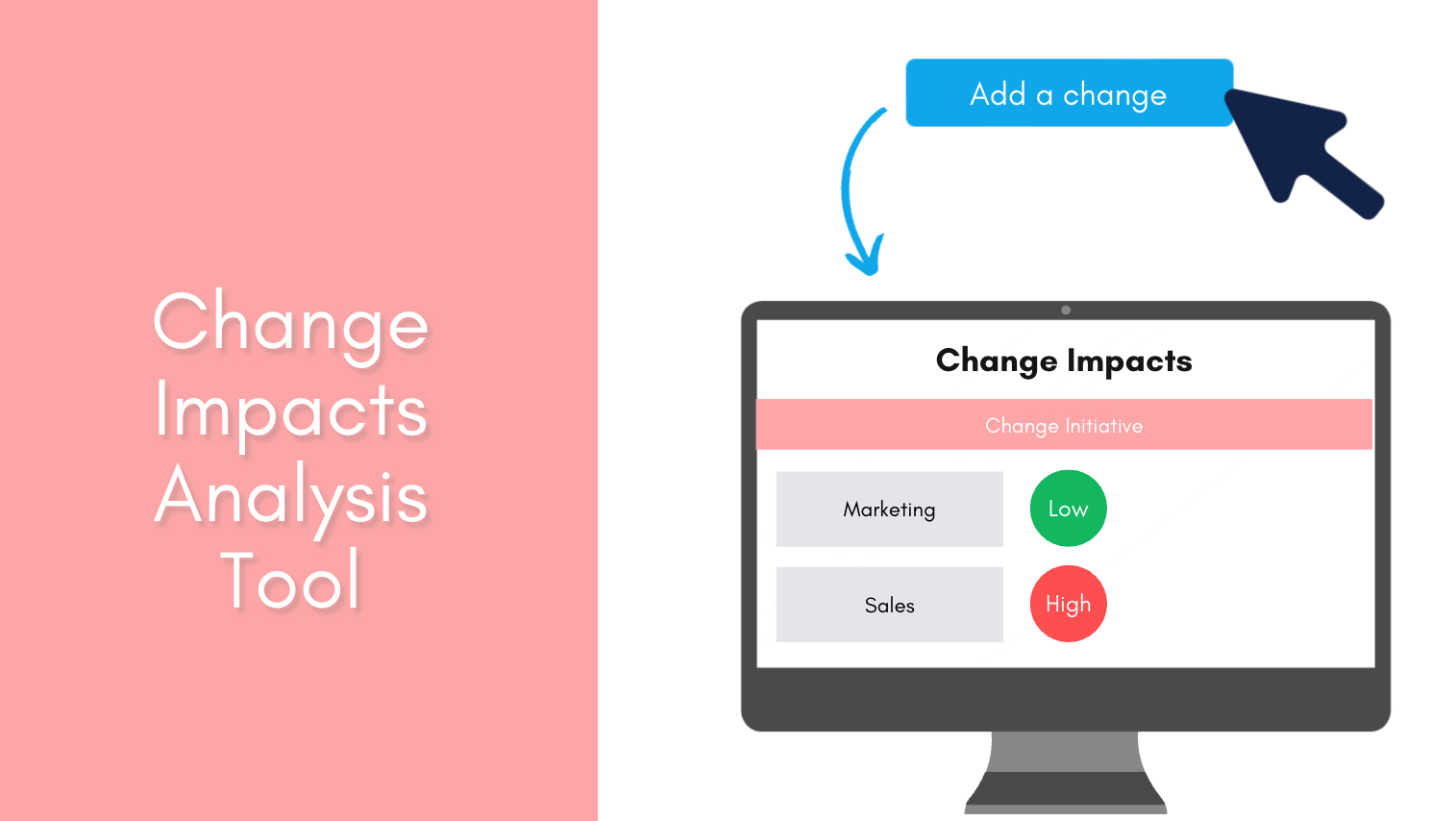
The OCMS Portal Change Impacts Assessment Tool includes an Agile change management template with editable dropdown columns.
What is an Agile Change Management Process?
An Agile change management process involves a series of steps that you need to complete for an Agile project. This series of steps involve when you should conduct change management communications, impact assessment, stakeholder engagement, and other change activities.
There will be two main things you want to consider when using an Agile change management framework. These will be:
1. The iterative process of Agile
2. The principles that are at the heart of what Agile project management means
In this section, we’ll discuss change management in Agile projects as it relates to the iterative Agile sprints. In the next section, we’ll address the principles to consider during change management Agile transformation.
An Agile change management process flow will be done in sprints, and you may not have all the information to do things like an impact assessment for the entire project at the beginning.
For example, for sprints, Agile, SAFe, etc. types of projects, the future state might not be fully defined in the beginning. As each sprint is finalized, you will need to update your Agile change management plan template and add more information for the future state.
The type of project methodology being used by the program team impacts how often and how quickly your Agile organizational change management plans will need to be delivered. This is because change management deals with the people side of change, and so your change management plans (communications, training, engagement, stakeholder management, etc.) will be geared towards the end-users who will be impacted by the change.
For projects that utilize project methodologies, that involve sprints such as SAFe Agile Change Management or Scrum change management, your change management timeline will be based on WHEN impacted users will be impacted, which will often be different from the dates when sprints are completed.
Change management in Agile Scrum and other sprint-related methodologies may have multiple sprints and Agile cycles over a period of time, and you need to track and be in the loop of what is changing during these sprint Agile change management processes.
This helps to ensure you are building out your change impact assessments and planning as needed, but delivering your change management plans (e.g., when you communicate, when you schedule training, etc.) based on when the overall project is close to being completed and rolled out. This is around the time when impacted users need to be aware of the change and what is coming.
Communicating too early when working with change management Agile projects often leads to impacted end users tuning you out. In general, 6-12 weeks before Go-Live is generally when change teams start providing awareness of a change.
And so, if a project using an Agile change management process is going to spend 1 year going through multiple rounds of sprints, your role will involve keeping track of the various impacts from each sprint, but you should not start finalizing and rolling out your change plans until about 6-12 weeks before Go-Live.
OCMS Portal Change Impact Tool with Agile Change Management Plan Templates.
Do you have any questions about Agile and change management? Are you looking for an Agile change management PDF? Please reach out and let us know.
Agile and Change Management Principles & Samples
Beyond the difference in the timeline of your delivery of an Agile change management plan, you will also need to be mindful of the Agile Manifesto and 12 principles, so you can incorporate those values into your area of the project.
We will go through a few Agile change management examples below to illustrate how Agile principles can relate to the delivery of change management.
Principle 2: Welcome changing requirements, even late in development. Agile processes harness change for the customer’s competitive advantage.
- Change Management Agile: Your team must keep in continuous contact with the project team so you can capture any late-stage project changes that will impact stakeholders.
Principle 4: Businesspeople and developers must work together daily throughout the project.
- Change Management Agile: Silos will not work well when using change management and Agile, all project partners need to work together regularly since Agile projects can have parameter changes (large and small) often, and the change team needs to incorporate these into change management plans.
Principle 5: Build projects around motivated individuals. Give them the environment and support they need, and trust them to get the job done.
- Change Management Agile: Delegate authority among your team and, if possible, stand up a change champions network and enable them to help you gain support within their departments.
Principle 6: The most efficient and effective method of conveying information to and within a development team is face-to-face conversation.
- Change Management Agile: Don’t communicate only via email or messaging with the project team, sponsors, critical stakeholders, and others. Use face-to-face conversation as much as possible either in-person or via video meetings.
Principle 10: Simplicity–the art of maximizing the amount of work not done–is essential.
- Change Management Agile: Try to use as few templates and tools as possible. Meaning stay away from singular-use spreadsheets that can be cumbersome and disconnected. Instead, use an all-in-one solution for your Agile change management process flow, such as the OCM Solution Change Management Software.
Do you have more Agile change management examples you would like to see listed above? Kindly message us to let us know.

OCMS Portal Change Impact Assessment Tool with Agile Change Management Plan Template
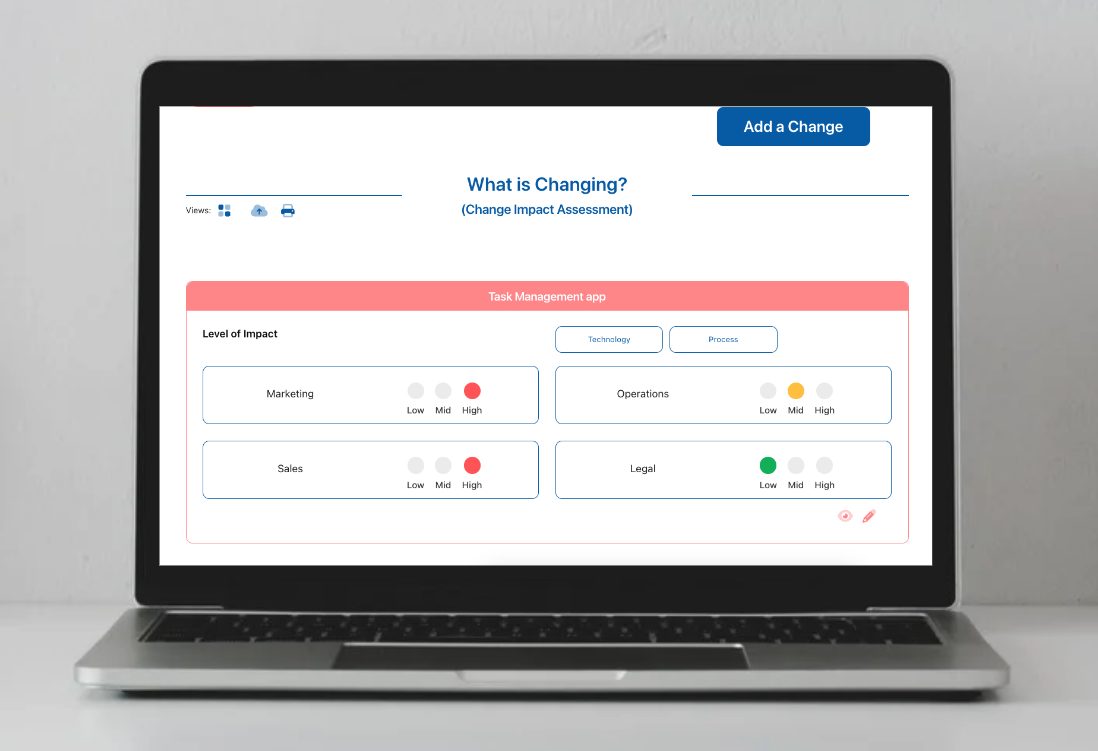
OCMS Portal Change Impact Assessment Tool can be used for any type of project – a waterfall change management process, an Agile change management process, Prosci Agile change management, SAFe Agile change management, and any other methodologies.
How Do You Go From Change Management in Waterfall to Agile?
As we noted, the waterfall change management process is linear. You begin your first phase or stage at the beginning and then your last phase will come at the end.
Going from change management waterfall to Agile in your strategy means adapting to having all project phases happen several times, once per sprint. You as a change manager or change team member need to also be agile so you can update your Agile change management plan template and engagement as the project evolves.
Waterfall Change Management
- You will have all details on the future state at the beginning of the project during the change impact assessment.
- All impacted groups and the level of impact can be assessed at the beginning of your change management planning.
- Any changes in the project that happen after your activities have started will typically be minor.
- You will be going through the change management process sequentially.
Agile Change Management
- You will most likely not have all details on the future state at the beginning of the project. You’ll need to keep in contact with the project team as the future state is defined and updated so you can adjust your change management processes accordingly.
- The impacted groups and the level of impact can be assessed at the beginning of your change management planning; however, this can easily change as the sprints in an Agile project progress.
- Using Agile and change management means that there will most likely be changes that happen in the project after your activities have started, these can be both minor and major. You’ll need to anticipate this and be ready to adjust your change implementation in Agile accordingly.
- You will be going through the change management process in a repetitive and cyclical fashion.
Do You Need Templates & Tools Specific to an Agile Change Management Framework?
Check out this Top Change Impacts Assessment Tool
Change Management in Agile | What’s the Difference Between SAFe, Scrum, and Other Agile Methodologies?
When you’re first introduced to Agile Change Management Processes, you’ll be hit with multiple acronyms and names. These are all different frameworks or methodologies for managing projects that use Agile principles and values.
Two of the popular methodologies are Scrum and SAFe. Scrum refers to the breakdown of a project into smaller parts. SAFe is short for “Scalable Agile Framework.”
The main difference between these change management and Agile methodologies is that Scrum is focused on organizing small teams to facilitate a project and SAFe is focused on organizing entire enterprise organizations to facilitate a project or change.
Change management in Agile Scrum would be adopted by a team as a way to handle the project planning and execution, where SAFe would be adopted on a larger scale, by the entire organization.
There are other Agile methodologies that you may run across when working with an Agile approach to change management. These may include:
- Lean
- Kanban
- Scrumban
- Crystal
- PRINCE2
- Extreme Programming (XP)
- And more

Do you have any questions about Agile organizational change management or Prosci Agile change management? Are you looking for an Agile change management PDF? Please reach out and let us know.
See also: Agile Change Management Process Tool with Templates, Samples & Reporting
Templates for Agile Change Management Processes & Planning
Are you seeking paid & free templates, samples, tools, or checklists for Agile change processes & planning? OCMS Portal’s free and paid templates will save you time and help streamline the entire change management process for you and your team.
Use our Free Project Management Template to plan and manage projects. You’ll get a free Agile project timeline template, in addition to the cloud-based project management template.
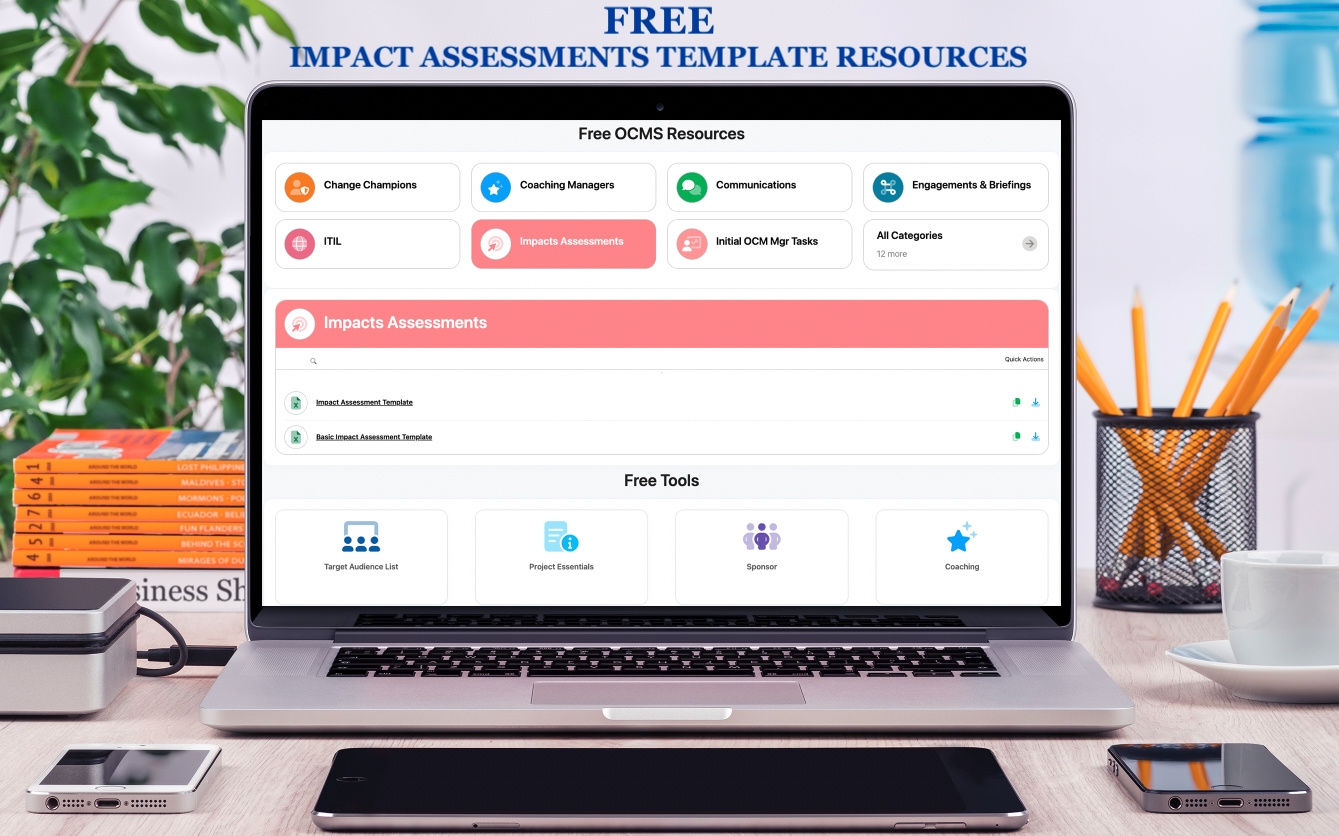
The OCMS Portal Change Impact Assessment Template provides instant reporting on all your change impacts, allowing you to easily update and adjust as project details change from sprint to sprint.
You won’t waste any time having to redo graphs or charts, because your reports are generated for you automatically as you update your data. They’re always an accurate reflection of your template data and ready to share with project sponsors, executives, and key stakeholders.
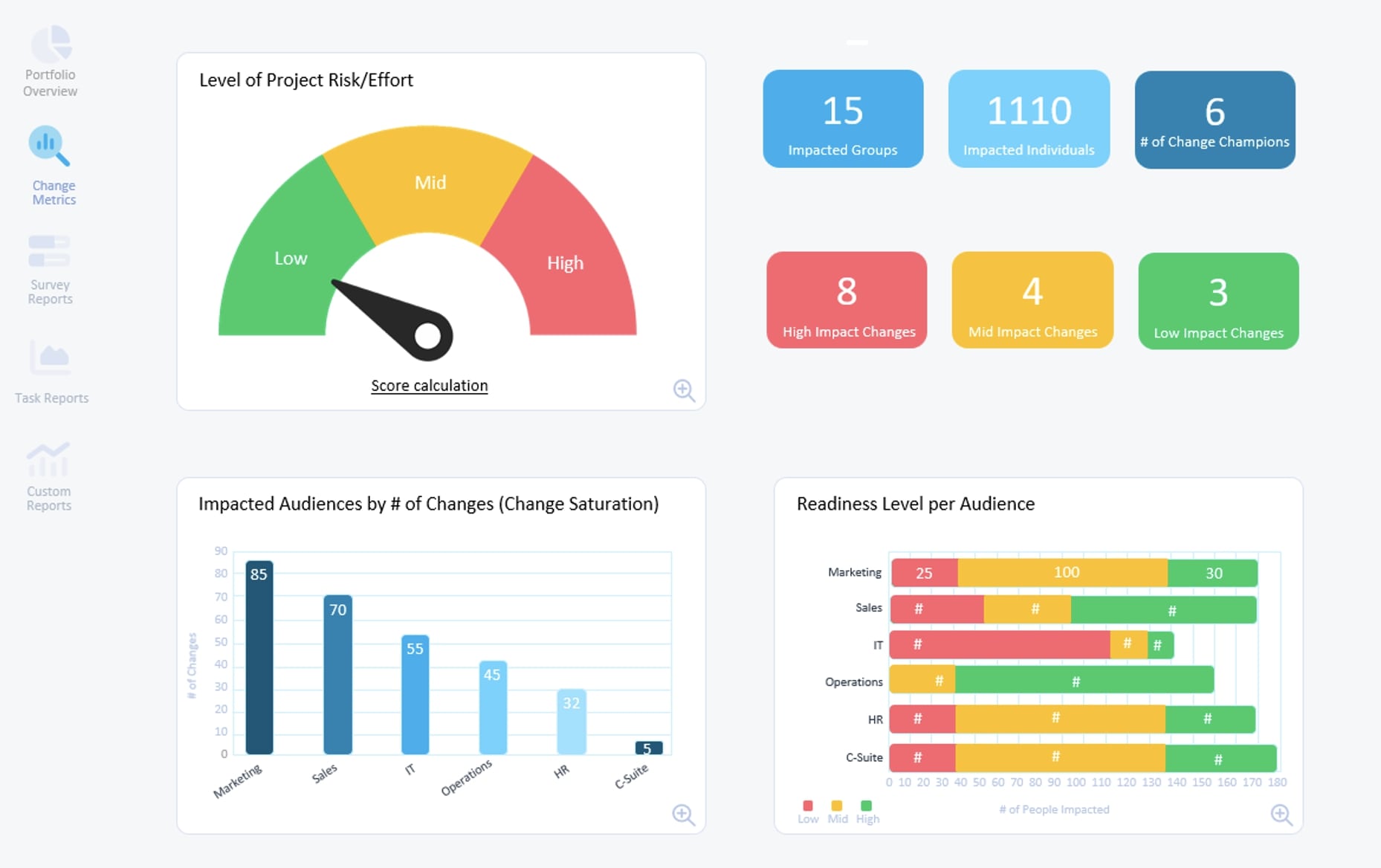
The automated reporting in the OCMS Portal change management platform is perfect for supporting Agile change management processes.
Let us know if you have any questions about using the OCMS Portal change management software for change management in Agile projects.
Agile Change Management Plan FAQs
What is an Agile change management process?
An Agile approach to change management and project management means that a project is done using an iterative workflow. This means that a project is split up into different parts called “sprints.” Each sprint will involve going through a “mini” version of a waterfall project management process and delivering that part of the project, then moving onto the next part/sprint, and improving parameters of the project from what was learned during the earlier sprint.
Does Agile have change management?
Agile is a project management approach. Change management is a part of project management for projects that impact people. Thus, Agile can have change management, as it is necessary to help impacted stakeholders (employees, leaders, customers, etc.) successfully adopt the change being implemented for the project to be seen as successful.
How do you use change management in Agile?
There will be two main things you want to consider when using an Agile change management framework. These will be:
• The iterative process of Agile
• The principles that are at the heart of what Agile project management means
How an Agile change management plan is delivered will be similar to any other type of project, but the Agile process will impact WHEN you deliver your engagement, communications, training, etc. It will also include continuous updates being needed for things like impact assessments and other areas of change management activities as the project requirements change throughout each sprint.
Is Scrum a change management?
Scum is not a change management framework; Scrum is an Agile framework. It refers to the breakdown of a project into smaller parts. Scum is focused on organizing small teams to facilitate a project and change management in Agile Scrum would be adopted by a team as a way to handle the project planning and execution.
Note: Content on OCM Solution's ocmsolution.com website is protected by copyright. Should you have any questions or comments regarding this OCM Solutions page, please reach out to Ogbe Airiodion (Change Management Lead) or the OCM Solutions Team today. OCM Solution was previously known as Airiodion Global Services (AGS).
External image sources:
- Stock.adobe.com
- https://www.ls.graphics/free/free-pixel-4-and-pixelbook-go-mockup


